“Cultivate the habit of being grateful for every good thing that comes to you, and to give thanks continuously. And because all things have contributed to your advancement, you should include all things in your gratitude.” -Ralph Waldo Emerson
Every week brings a new set of challenges, but also a new opportunity to find not only great things within ourselves, but wonder wherever we look and the prospect of getting to share it with others. This past week has seen some remarkable stories get told at Starts With A Bang, including:
- The birth of space and time (for Ask Ethan),
- Make 2015 a year in space (for our Weekend Diversion),
- Orion's second nebula, M43 (for Messier Monday),
- Dark matter and the origin of life (a remarkable story from James Bullock),
- Physics at the Universe's limits (a great read by Amanda Yoho),
- The most precise signal in the Universe, and
- Giving thanks for our Universe (for Throwback Thursday).
Perhaps this week should have seen a Thanksgiving Thursday more appropriately, but it's time to look into what you had to say now. Let's jump right in to your Comments of the Week!
From Obrigatorio on spacetime's birth: "The wikipedia page for inflation says: “The inflationary epoch lasted from 10^−36 seconds after the Big Bang to sometime between 10^−33 and 10^−32 seconds.”"
It sure does. To that, the first thing I would say would be exactly what Randall Munroe would say as respects any wikipedia claim:
 Image credit: Randall Munroe of xkcd, via http://xkcd.com/285/.
Image credit: Randall Munroe of xkcd, via http://xkcd.com/285/.
Citation needed. But even if it provided one, it wouldn't change the fact that it's almost certainly an inaccurate statement anyway. Inflation, you must remember, by its very nature wipes out any information that existed prior to inflation. The numbers provided in the Wikipedia article perhaps represent the minimum amount of inflation that could have happened and still reproduced a Universe that is consistent with our observations.
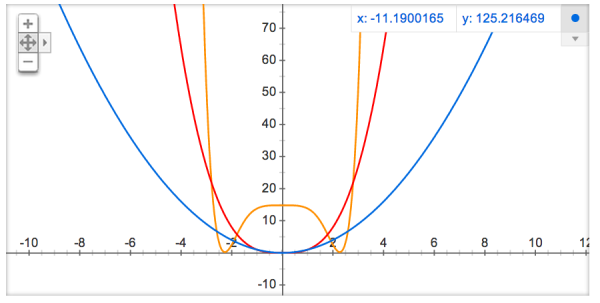 Image credit: me, created using Google’s graph tool, of different successful inflationary potentials.
Image credit: me, created using Google’s graph tool, of different successful inflationary potentials.
The energy scale of inflation could have been significantly lower and would still be consistent with our observations, in which case inflation would have ended much later: perhaps as late as 10^-20 seconds after the Big Bang. But by far the biggest assumption is that inflation began some time after the Big Bang. That's true at minimum, but far more likely -- and this is all theoretical now, because there are no observation we can make to rule out a later start to inflation -- is the possibility that inflation went back for an arbitrarily long time in the past before our observable Universe was birthed. We do not know how inflation began, or whether it's been an eternal state to the past or not, but assuming the minimum amount of time to its extent is not motivated by anything other than our prejudices. We know the Universe was in an inflating state prior to the hot, dense state we call the Big Bang, we know that GR predicts a singularity before that but we also know that a singularity is where GR breaks down, and that's where we are. Placing a timeframe on that is simply speculation posing as fact. (Go read this for more details.) If you want to do something about it, go edit wikipedia, and cite me if you like. I'll vouch for the scientific truth.
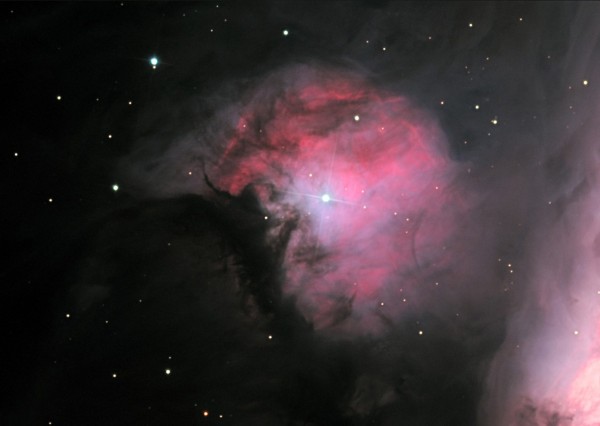 Image credit: Amy Harmon and Scott Matthews / Adam Block / NOAO / AURA / NSF, via http://gallery.rcopticalsystems.com/gallery/m43.html.
Image credit: Amy Harmon and Scott Matthews / Adam Block / NOAO / AURA / NSF, via http://gallery.rcopticalsystems.com/gallery/m43.html.
From David N on the Messier Monday series: "Thanks for the wonderful series of “Messier Monday’s” I have enjoyed every single one."
As far as success can be measured, the Messier Monday series has been a mixed bag for me. On the one hand, it consistently brings me the least amount of traffic of any of the types of posts I write, despite taking just as long to make it happen. But on the other hand, it has given me the tremendous opportunity to learn about 110 distinct objects in detail, including a few classes of objects that I knew relatively little about, and then to share that knowledge with everyone who's willing to listen.
It's absolutely worth it, and before I dive in to the next Monday project, I'm pretty sure that it's important to recap all 110 objects for everyone, and to give us all one last look at each of them. Stay tuned!
From Ragtag Media on the struggle between dark matter and dark energy: "[In this article, James Bullock said:] 'Because of dark energy’s inevitable triumph, our Universe is approaching a pinnacle in complexity. At some point in the future, fresh fuel for star formation will stop falling into galaxies and no new stars will be able to form.'
[But in 2012, Ethan said:] 'Although we might be approaching the peak of star density within our galaxy, we can very strongly say that the vast majority of stars that will ever call our galaxy home haven’t been born yet.'"
So how are both of these true? Quite simply, we've already finished forming structures on the largest scales. Our local group -- Andromeda, the Milky Way, the Triangulum galaxy and about 40 dwarf galaxies -- is all we'll ever grow into. And while a big burst of star formation lies ahead about three-to-six billion years in our future, all the fuel that we'll ever have for star formation in our local group is already in our local group.
But there's a lot more than you may realize.
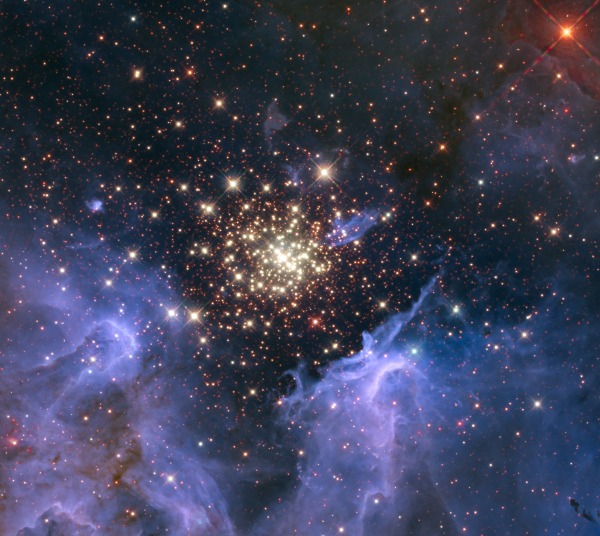 Image credit: NASA, ESA, R. O'Connell, F. Paresceysics, E. Young, the WFC3 Science Oversight Committee, and the Hubble Heritage Team (STScI/AURA).
Image credit: NASA, ESA, R. O'Connell, F. Paresceysics, E. Young, the WFC3 Science Oversight Committee, and the Hubble Heritage Team (STScI/AURA).
Because only a few percent of the matter in our local group is locked up in stars, and -- as James articulated quite clearly in his article -- the presence of large amounts of dark matter prevents the burned nuclear fuel from being spit out of a galaxy entirely upon its star's death.
The rest comes down to counting. When the Universe began, all the matter was roughly (by mass percentage) 75% hydrogen, 25% helium, and 0% everything else. Now, after 13.8 billion years, all the matter is roughly 70% hydrogen, 28-29% helium, and 1-2% everything else. Well, stars burn hydrogen into helium and helium into other stuff. We're not getting new gas from anywhere else, it's true, but we don't need it because we've got plenty of fuel for more stars for quadrillions of years. Yes, the rate of star formation will drop, but we'll continue our march away from hydrogen, through helium and into everything else. It's going to be a long ride!
Image credit: Nigel Sharp, National Optical Astronomical Observatories/National Solar Observatory at Kitt Peak/Association of Universities for Research in Astronomy, and the National Science Foundation.
From Scott on the most precise signal in the Universe: "Thanks for that! (insert lightbulb over head emoji here)
I’ve done a ton of spectroscopy over the years, and never gave any thought to why emission lines smeared. Uncountable little doppler shifts makes so much sense!"
The "little doppler shifts" make a huge difference; some of them are due to thermal (i.e., heat) excitation, or the simple energies-of-motion of molecules and atoms, while others are due to kinetic effects on larger scales, which causes lines to broaden because you're seeing it from multiple parts of a rotating system.
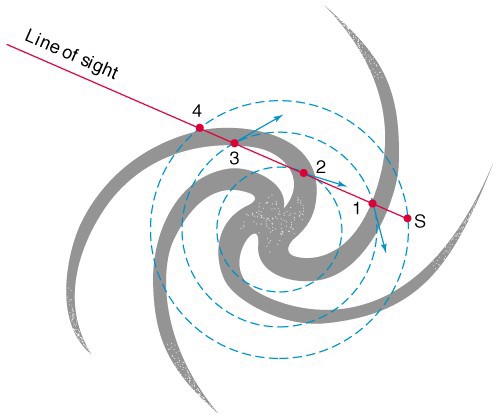 Image credit: Charles R. Evans of University of North Carolina, via http://user.physics.unc.edu/~evans/.
Image credit: Charles R. Evans of University of North Carolina, via http://user.physics.unc.edu/~evans/.
But there is a third source, too, and it goes to answer Sinisa Lazarek's point: "I can understand that grav. wave will make the line wider, but if I understood correctly, this will happen only if the photons are affected by grav. wave in the first place. i.e. observing a spectra of a distant star where you have two neutron star binary in between you and the star you observe."
The crazy thing about gravitational waves is that the source doesn't need to be either near you or in between you and your observational source. As long as the gravitational waves can reach you -- and since nothing in the Universe can shield gravitational waves, anything that generates them can reach you -- they're going to broaden your lines. So it's more of a question of what's out there generating gravitational waves of the right frequency to broaden a 21-cm line? The sources I gave:
- supernovae,
- orbiting black holes,
- inflation,
- extra dimensions,
- a Universe that never had an inflationary phase, or
- a time-varying gravitational constant,
are some options, and all have different magnitude predictions, and some of them are transient while others will always be present. We are barely getting started with gravitational wave astronomy, but just as opening up our astronomical perspectives beyond visible light literally gave us a whole new window into the Universe, gravitational wave astronomy should as well. As always, I'm impatient for it to get here!
And finally from BirgerJohansson on something to be thankful for: "And thank the Earth’s atmosphere, for providing a stable oxygen content, making multicellular life possible.
Earth only ot a stable large oxygen content around 800 million years ago, same time the eukaryotes began to go multicellular and ending the “boring billion” years when not much happened. “Large” here means an oxygen content of 1% of the air."
It is also remarkable that the large fraction of oxygen in our atmosphere has come to be, and something to be thankful for, as the possibility of aerobic respiration (using oxygen as a fuel source) opens up tremendous opportunities for life to do things via stored chemical energy that would be otherwise impossible. The amount of oxygen in our atmosphere, by the way, is produced by all the photosynthesizing life on Earth in a timeframe of only 2,000 years! But has it only been 1% for ~800 million years?
According to the work of Heinrich Holland, not exactly! While the majority of oxygen -- which began being produced by cyanobacteria about 2.5 billion years ago -- was absorbed by various ocean and rocky sources, it began appearing in the atmosphere at the few percent level as far ago as 2.3 billion years! So this is great for exoplanet hunters, because we can find oxygen at the few percent level with telescopes being planned today, and we don't need a cambrian explosion for it to happen. Perhaps that's something else to be thankful for, too!
Thanks for a great week of comments, don't forget to enter our giveaway by submitting your Ask Ethan questions along with your email address, and I'll see you back here for more wonders of the Universe!

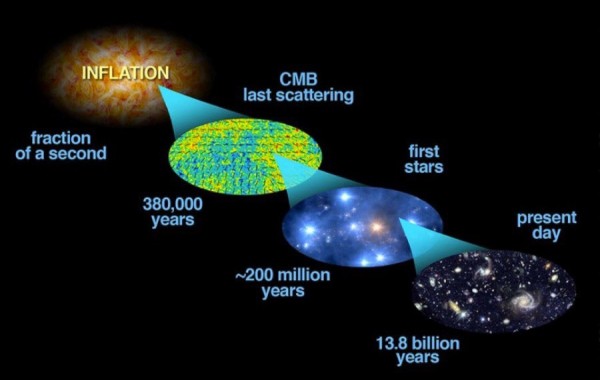
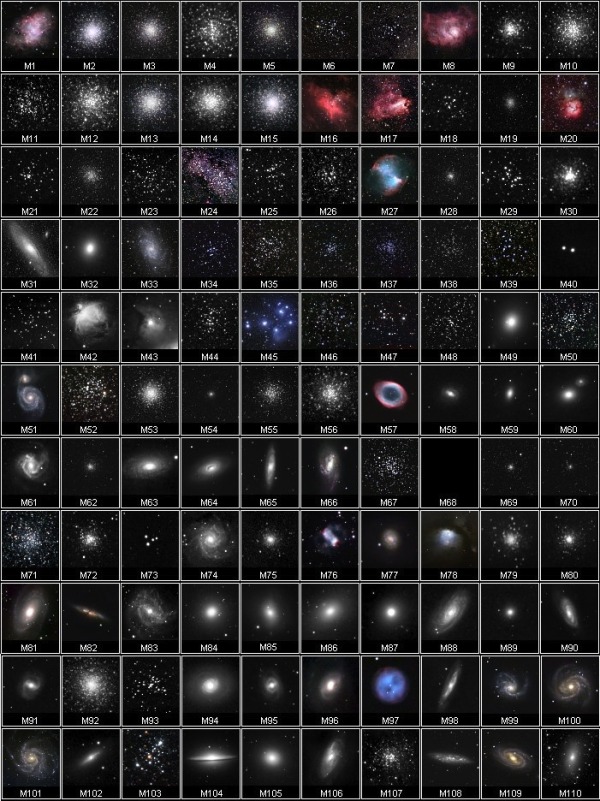
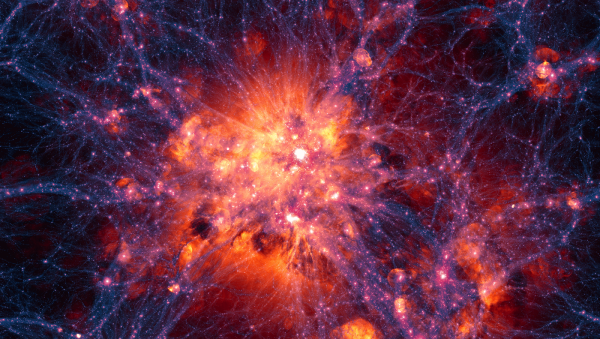
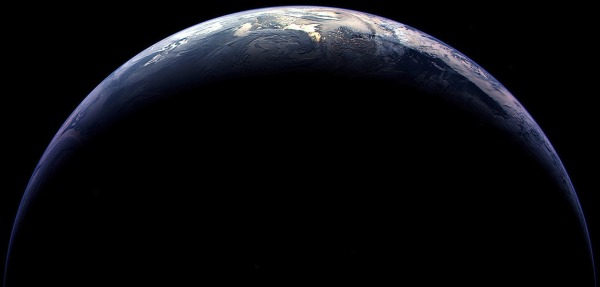

The recent survey of 93 extremely distant quasars has revealed a possible connection between quasars and the universe's large-scale structure, i.e the quasars' axes of rotation are parallel to the filaments in which they are located.
Do you think this may lead to new physics or cosmology?
@david hurn #1: The statistics of the sample are fairly limited. In any event, the axial alignment could indicate new physics (such as cosmic strings or other field-theoretic topological effects), but it could also potentially be nothing more than angular momentum conservation.
If the observed massive filaments formed by simple gravitational collapse, then you would expect them to have net angular momentum along their axes (this is just a generalization of gravitational torque and pancaking).
We need a larger sample, preferably spread over both a large angular space (on the sky) and a large depth in redshift, in order to discern primordial effects from evolutionary ones.
Recently two stories, one about quasar orientation and the second about the "first objects in the universe", got me thinking about the processes involved. This consolidation of matter along these large strings surrounding voids almost reminds me of the froth of a milkshake. Is there any chance that these voids that the strings of matter surround are the remnants of tremendous explosions that occurred soon after the first hydrogen atoms. I'm envisioning explosions far larger than the largest supernovas with millions of them happening at about the same time. This would create both the voids and the froth. On a side note I'd like to say "Thank You" for one of the most comprehensive and approachable sources for information on current cosmological investigation.